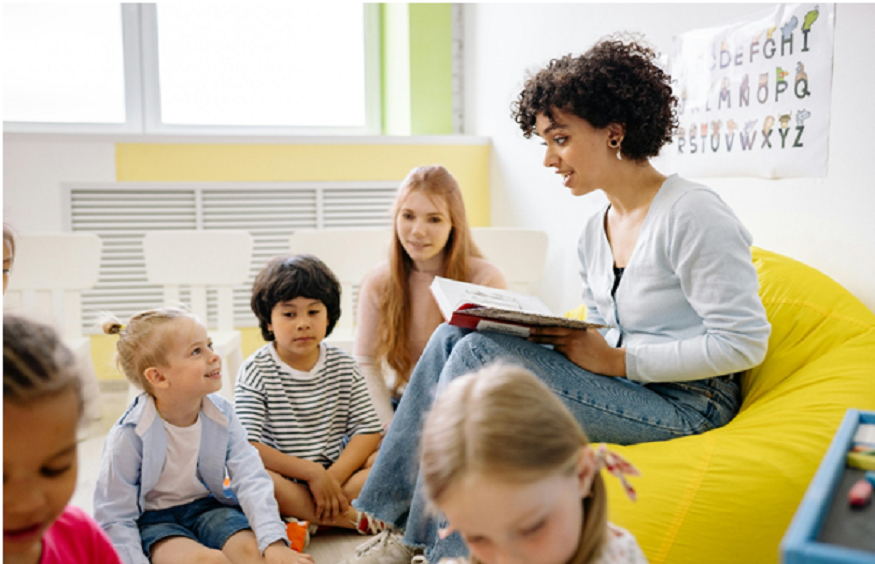Empathy is a cornerstone of emotional intelligence, allowing students to understand and connect with others’ feelings, perspectives, and experiences. In today’s diverse and dynamic educational environments, fostering empathy isn’t just a ‘nice-to-have’ skill; it’s essential for building inclusive, respectful, and harmonious communities.
By promoting empathy in the classroom, educators witha B.Ed. in SEN can prepare students to navigate social challenges, form meaningful relationships, and contribute positively to society. Below, we’ll explore three effective ways to promote empathy in the classroom, with practical strategies and examples for each.
3 Ways To Boost Empathy In Students
Here are a few ways to embed empathy in projects and assignments to help students understand its importance:
1. Incorporate Storytelling and Literature
Storytelling is one of the most powerful tools for building empathy. Stories enable students to step into someone else’s shoes and experience different cultures, struggles, and perspectives. Literature, in particular, serves as a bridge to diverse worlds and ideas, fostering an understanding of people who are different from themselves.
-
Choose Diverse Texts
Incorporate books, poems, and articles from authors of different backgrounds. Stories featuring characters who face adversity, discrimination, or unique challenges can prompt students to think deeply about others’ experiences.
Assign books that tell the story of a boy with a facial deformity navigating school life, or something which explores life through the eyes of a young girl in Afghanistan.
-
Encourage Perspective-Taking
After reading, ask students reflective questions like Do you think the character felt in this situation?’, ‘What would you do if you were in their shoes?’, ‘How can we apply what we learned from this story to our own lives?’
-
Share Personal Stories
Create opportunities for students to share their own experiences. A “story circle” activity, where each student recounts a moment of kindness or struggle, can build trust and understanding within the class.
-
Empathy Journals
Have students keep an empathy journal where they write about characters’ emotions in the stories they read, how they relate to those feelings, and what they would do to help in a similar situation. Over time, this reflective practice deepens their ability to connect with others.
2. Practice Active Listening and Communication Skills
Active listening is an essential skill for developing empathy. It involves truly hearing what someone else is saying—not just the words but the emotions behind them. By teaching students how to listen and respond empathetically, educators can foster more meaningful and compassionate interactions in the classroom.
-
Model Empathetic Listening
Demonstrate how to listen with full attention, using body language, eye contact, and affirming responses like nodding or paraphrasing. Let students see how validating someone’s feelings can strengthen connections.
-
Teach ‘I’ Statements
Equip students with the language to express their feelings without blaming others. For example: Instead of: ‘You never let me join your group!’ teach them to say ‘I feel left out when I’m not included.’
-
Role-Playing Exercises
Create scenarios where students practice active listening in pairs or small groups. For example:One student shares a story about a challenge they faced. The other student listens attentively and paraphrases what they heard. Then, they discuss how they felt and brainstorm solutions together.
-
Empathy Circle Discussions
Organize regular empathy circles where students take turns sharing thoughts on a given topic while others listen without interrupting. Topics could range from simple prompts like ‘What made you happy this week?’ to deeper questions like ‘How do you think we can help someone who feels excluded?’
This practice not only builds listening skills but also creates a safe space for students to express themselves, fostering mutual respect.
3. Engage in Collaborative and Community-Based Projects
Collaboration and community engagement teach students how to work with others toward a common goal, often requiring them to consider the needs and perspectives of their peers. Projects that emphasize teamwork and service learning can instill a sense of responsibility and compassion.
-
Classroom Responsibilities
Assign group tasks that require cooperation, like organizing a classroom library or planning a celebration. Rotate roles to ensure every student experiences different perspectives.If one student is tasked with being the “listener” during group discussions, they’ll practice focusing on others’ ideas instead of just their own.
-
Service Learning Projects
Connect classroom learning with real-world issues by involving students in community service. Examples include: Volunteering at a local shelter, organizing a food drive, and writing letters to residents of nursing homes or soldiers overseas.
-
Problem-Solving Challenges
Present scenarios where students must work together to solve a problem while considering others’ feelings and needs.
-
Buddy System
Pair students with a ‘buddy’ for various activities, encouraging them to help each other succeed. Buddies can support each other academically, like studying for a quiz, or emotionally, like checking in when one feels overwhelmed. Regularly rotate pairs so students build connections with different classmates.
Bottom Line
Promoting empathy in the classroom is an ongoing process that requires intentionality and creativity. These strategies not only prepare students to be kind and compassionate individuals but also lay the foundation for a more inclusive and understanding world.When empathy becomes a natural part of the classroom culture, students learn to value diverse perspectives, communicate effectively, and form genuine connections with others—skills that will benefit them for a lifetime. As educators with Online Special Education Courses,you hold the power to shape empathetic hearts and minds, one interaction at a time.

